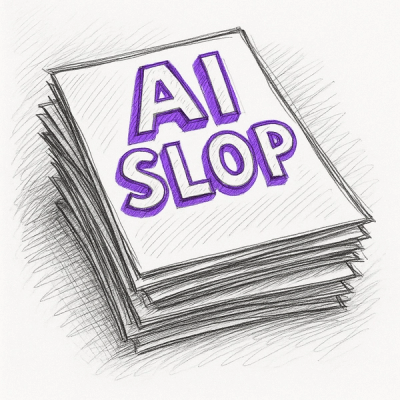
Security News
Official Go SDK for MCP in Development, Stable Release Expected in August
The official Go SDK for the Model Context Protocol is in development, with a stable, production-ready release expected by August 2025.
algolia_html_extractor
Advanced tools
This gem can convert HTML content into JSON records ready to be pushed to Algolia.
Each HTML page will yield an array of records (one for each <p> by default).
Each record will contain its hierarchy in the page as well as other metadata
that can be used to configure relevance.
# Gemfile
source 'http://rubygems.org'
gem 'algolia_html_extractor', '~> 1.0'
require 'algolia_html_extractor'
content = File.read('./index.html')
page = AlgoliaHTMLExtractor.new(content)
records = page.extract
puts records
extract will return an array of records. Each record will represent a <p>
paragraph of the initial text, along with it textual version (HTML removed),
heading hierarchy, and other interesting bits.
Let's take the following HTML as input and see what records we got as output:
<!doctype html>
<html>
<body>
<h1 name="journey">The Hero's Journey</h1>
<p>Most stories always follow the same pattern.</p>
<h2 name="departure">Part One: Departure</h2>
<p>A story starts in a mundane world, and helps identify the hero. It helps puts all the achievements of the story into perspective.</p>
<h3 name="calladventure">The call to Adventure</h3>
<p>Some out-of-the-ordinary event pushes the hero to start his journey.</p>
<h3 name="threshold">Crossing the Threshold</h3>
<p>The hero quits his job, hits the road, or whatever cuts him from his previous life.</p>
<h2 name="initiations">Part Two: Initiation</h2>
<h3 name="trials">The Road of Trials</h3>
<p>The road is filled with dangers. The hero as to find his inner strength to overcome them.</p>
<h3 name="ultimate">The Ultimate Boon</h3>
<p>The hero has found something, either physical or metaphorical that changes him.</p>
<h2 name="return">Part Three: Return</h2>
<h3 name="refusal">Refusal to Return</h3>
<p>The hero does not want to go back to his previous life at first. But then, an event will make him change his mind.</p>
<h3 name="master">Master of Two Worlds</h3>
<p>Armed with his new power/weapon, the hero can go back to its initial world and fix all the issues he had there.</p>
</body>
</html>
Here is one of the records extracted:
{
:objectID => "1f5923d5a60e998704f201bbe9964811",
:html => "<p>The hero quits his job, hits the road, or whatever cuts him from his previous life.</p>",
:text => "The hero quits his job, hits the road, or whatever cuts him from his previous life.",
:node => #<Nokogiri::XML::Element:0x11a5850 name="p">,
:anchor => 'threshold',
:hierarchy => [
"The Hero's Journey",
"Part One: Departure",
"Crossing the Threshold"
],
:custom_ranking => {
:heading => 70,
:position => 3
}
}
Each record has a objectID that uniquely identify it (computed by a hash of all
the other values).
html contains the whole outerContent of the element, including the wrapping
tags and inner children. The text attribute contains the textual content,
stripping out all HTML.
node contains the Nokogiri node instance. The lib uses it internally to
extract all the relevant information but is also exposed if you want to process
the node further.
The anchor attributes contains the HTML anchor closest to the element. Here it
is threshold because this is the closest anchor in the hierarchy above.
Anchors are searched in name and id attributes of headings.
hierarchy then contains a snapshot of the current heading hierarchy of the
paragraph. The lvlX syntax is used to be compatible with the records
DocSearch is using.
The custom_ranking attribute is used to provide an easy way to rank two records
relative to each other.
heading gives the depth level in the hierarchy where the record is. Records
on top level will have a value of 100, those under a h1 will have 90, and so
on. Because our record is under a h3, it has 70.position is the position of the paragraph in the page. Here our paragraph is
the fourth paragraph of the page, so it will have a position of 3. It can
help you give more weight to the first items in the page.When instanciating AlgoliaHTMLExtractor, you can pass a secondary options
argument. This attribute accepts one value, css_selector.
page = AlgoliaHTMLExtractor.new(content, { css_selector: 'p,li' })
This lets you change the default selector. Here instead of <p> paragraph,
the library will extract <li> list elements as well.
I'm happy you'd like to contribute. All contributions are welcome, ranging from feature requests to pull requests, but also including typo fixing, documentation and generic bug reports.
For any bug or ideas of new features, please start by checking in the issues tab if it hasn't been discussed already. If not, feel free to open a new issue.
All PR are welcome, from small typo fixes to large codebase changes. If you think you'll need to change a lot of code in a lot of files, I would suggest you to open an issue first so we can discuss before you start working on something.
All PR should be based on the develop branch (master only ever contains the
last released change).
If you start working on the actual code, you should install the git hooks.
cp ./scripts/git_hooks/* ./.git/hooks
This will add a pre-commit and pre-push scripts that will respectively check
that all files are lint-free before committing, and pass all tests before
pushing. If any of those two hooks give your errors, you should fix the code
before committing or pushing.
Having those steps helps keeping the codebase clean as much as possible, and avoid polluting discussion in PR about style.
First thing you should do to get all your dependencies up to date is run bundle install before running any other command.
rake lint will check all the files for potential linting issue. It uses
Rubocop, and the configuration can be found in .rubocop.yml.
rake test will run all the tests.
rake coverage will do the same, but also adding the code coverage files to
./coverage. This should be useful in a CI environment.
rake watch will run Guard that will do a live run of all your tests. Every
update to a file (code or test) will re-run all the bound tests. This is highly
recommended for TDD.
If you want to test a local version of the gem in your local project, I suggest
updating your project Gemfile to point to the correct local directory
gem "html-hierarchy-extractor", :path => "/path/to/local/gem/folder"
You should also run rake gemspec from the html-hierarchy-extractor
repository the first time and if you added/deleted any file or dependency.
This gem was previously named html-hierarchy-extractor but has been renamed to
algolia_html_extractor to both make its intent clearer and follow gem naming
convention. That's also why this gem directly starts at v2.0.
FAQs
Unknown package
We found that algolia_html_extractor demonstrated a not healthy version release cadence and project activity because the last version was released a year ago. It has 1 open source maintainer collaborating on the project.
Did you know?

Socket for GitHub automatically highlights issues in each pull request and monitors the health of all your open source dependencies. Discover the contents of your packages and block harmful activity before you install or update your dependencies.

Security News
The official Go SDK for the Model Context Protocol is in development, with a stable, production-ready release expected by August 2025.

Security News
New research reveals that LLMs often fake understanding, passing benchmarks but failing to apply concepts or stay internally consistent.

Security News
Django has updated its security policies to reject AI-generated vulnerability reports that include fabricated or unverifiable content.